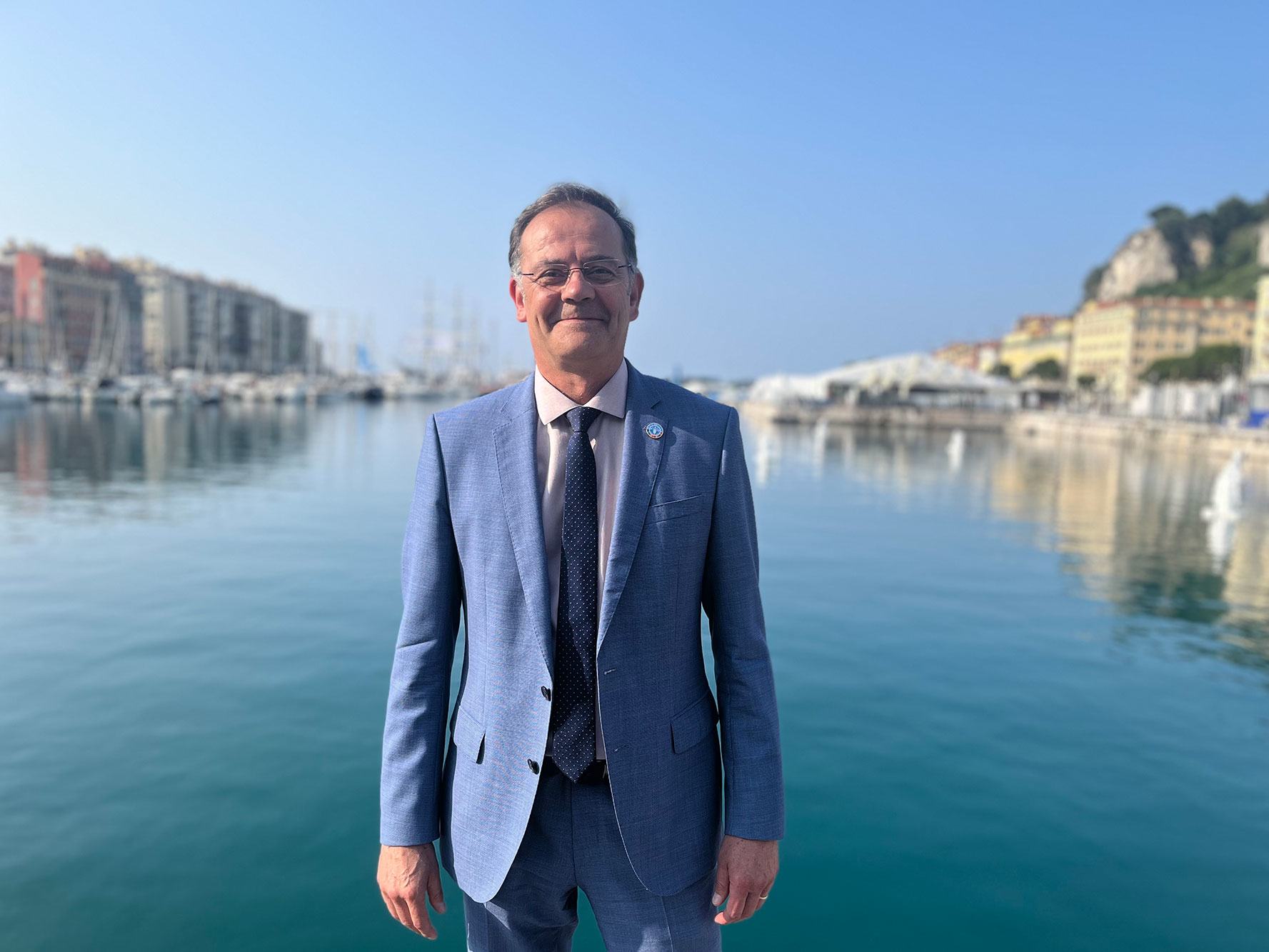At the Third UN Ocean Conference in Nice, the "catch of the day" wasn't a seabass or a red mullet - it was a figure: 35 per cent. That's the share of global fish stocks now being harvested unsustainably, according to a new UN report released Wednesday.
As yachts bobbed gently and delegates streamed by in a rising tide of lanyards and iPads at Port Lympia, Nice's historic harbor, that statistic sent a ripple through the summit's third day - a stark reminder that the world's oceans are under growing pressure from overfishing, climate change, and unsustainable management.
Presented dockside at a press conference by Manuel Barange, Assistant Director-General of the UN Food and Agriculture Organization ( FAO ), the report offered a detailed global snapshot of how human activity is steadily draining the ocean - and how sound management can bring it back.
"To use a banking comparison," Mr. Barange told UN News in an interview ahead of the report's launch, "we are extracting more than the interest the bank gives us. We are depleting the populations."
The "Review of the State of World Marine Fishery Resources 2025," which draws on data from 2,570 marine fish stocks - the widest scope used by FAO yet - paints a complex picture: while over a third of stocks are being overexploited, 77 per cent of fish consumed globally still come from sustainable sources thanks to stronger yields from well-managed fisheries.
"Management works," Mr. Barange said. "We know how to rebuild populations."

A global patchwork
Regional disparities remain stark. In the Pacific coast of the United States and Canada, over 90 per cent of stocks are sustainably fished. In Australia and New Zealand, the figure exceeds 85 per cent. The Antarctic - governed by strict international regulations - reports 100 per cent sustainability.
But along northwest Africa's coast, from Morocco to the Gulf of Guinea, over half of all stocks are overfished, with little sign of recovery. The Mediterranean Seas fare even worse: 65 per cent of stocks there are unsustainable. Yet there is a positive sign - the number of boats going out to fish in that region has declined by nearly a third over the past decade, offering hope that policy shifts are beginning to take effect.
For Mr. Barange, the lesson is clear: where management systems exist - and are backed by resources - stocks recover.
But science-based management is expensive. "Some regions can't afford the infrastructure needed for control and monitoring, the science needed, the institutions needed," he said.
"We need to build up capacity for the regions that are not doing so well. Not to blame them, but to understand the reasons why they are not doing so well and support them in rebuilding their populations."
From collapse to comeback
Perhaps the clearest example of recovery may be tuna. Once on the brink, the saltwater fish has made a remarkable comeback. Today, 87 per cent of major tuna stocks are sustainably fished, and 99 per cent of the global market comes from those stocks.
"This is a very significant turnaround," Mr. Barange said. "Because we have taken management seriously, we have set up monitoring systems, we set up management systems, compliance systems."
The full findings in the FAO's new report are likely to shape policy discussions far beyond Nice. The agency has worked closely with 25 regional fisheries-management organizations to promote accountability and reform, and Mr. Barange believes the model is replicable - if the political will holds.
Fish, livelihoods, and the blue economy
Countries were still negotiating on Wednesday the wording of the political declaration expected to be adopted on Friday at the close of UNOC3, as the conference in known. The statement will form part of the Nice Ocean Action Plan and is intended to align with the Kunming-Montreal Global Biodiversity Framework - the 2022 agreement to protect 30 per cent of the planet's land and ocean by 2030.
As the heat climbed once again over the stone quays of Nice - a city perched in one of Europe's most climate-vulnerable regions - sustainable fisheries took center stage inside the conference halls. Action panels focused on supporting small-scale fishers and advancing inclusive ocean economies, with delegates exploring how to align conservation goals with social equity - especially in regions where millions depend on fishing for survival.
'We're not apart from the ocean - we're a part of it' - FAO's Manuel Barange
"There are 600 million people worldwide who depend on fisheries and aquaculture for their livelihoods," Mr. Barange said. "In some countries, aquatic animals are the main source of protein. We're not apart from the ocean - we're a part of it."
As the conference moves into its final stretch, FAO's warning shines like a beacon: one-third of the world's fish stocks remain under too much pressure. But the data also offer something that can be elusive in the climate and biodiversity space - evidence that recovery is possible.
Three days in, the FAO report underscores a central message voiced by UN Secretary-General António Guterres , on Monday, as he opened the summit: recovery is still within reach.
"What was lost in a generation," he said, "can return in a generation."






